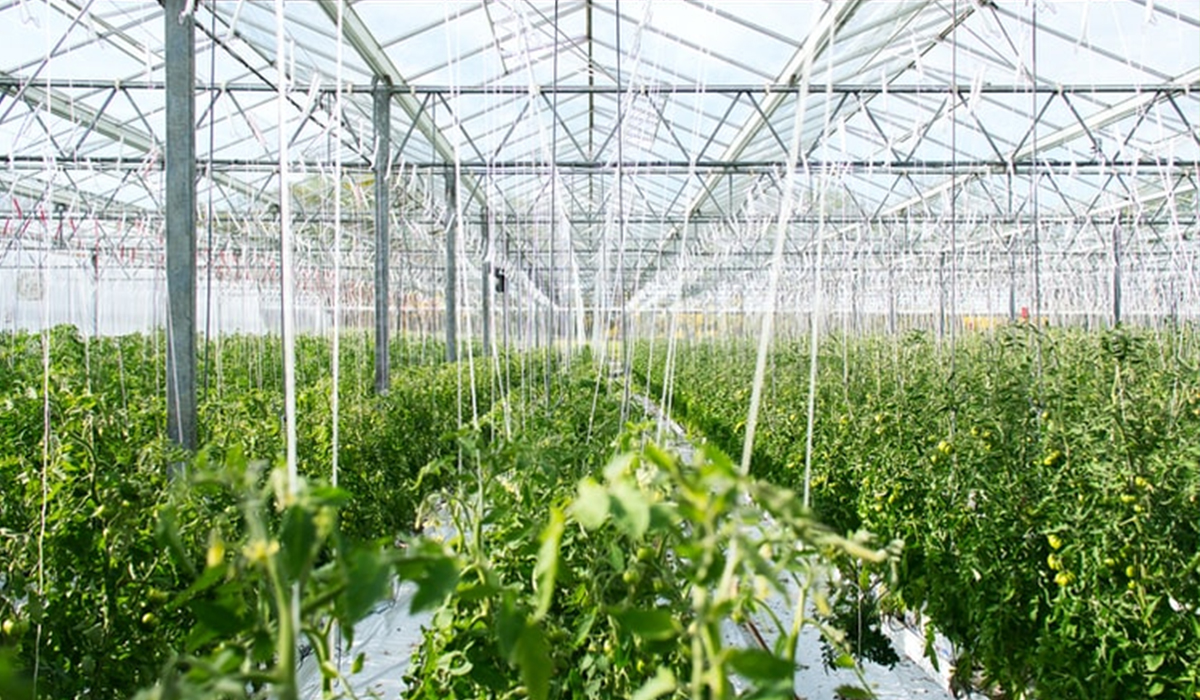Harvesting the sun’s power has become one of the main tools in our shift to a more sustainable energy future. But as we ramp up capacity, it comes with two potential risks: large-scale solar farms require vast amounts of land and can disrupt the earth’s natural flora.
However, in the last few years, advancing research on the ecological impact of photovoltaics has created a new PV niche with the potential to solve both issues. So-called agrivoltaics are emerging as a method to create renewable energy while also boosting production of food and other crops. By studying the flora and fauna of a specific location, strategically placed solar panels can provide partial shade that protects increasingly arid lands from droughts by reducing evaporation.
As this emerging method keeps proliferating, with global installed capacity jumping from around 5 megawatts to nearly 3 gigawatts in the last decade, a new way of applying the technology is also emerging: transparent solar panels for greenhouses.
Here are two pioneering projects increasing crop yields while generating clean power.
Smart shade PVs
A Swiss private-public consortium is testing transparent solar panels to replace the plastic covers used to grow strawberries and raspberries. Based in the canton of Valais, Switzerland, the project aims
to optimize the photosynthesis of plants during the seasons while reducing the negative impact of high summer heat.
- The greenhouse features solar technology from Swiss start-up Insolight: special transparent concentrator PV panels with an efficiency rating of 30% and the ability to let pass up to 78% of sunlight. Through optical micro-tracking technology, the modules can generate energy but also leak the light when necessary — creating a ‘smart’ shade that automatically adjusts the light.
- By both boosting photosynthesis and undermining excessive heat, the project aims to increase the yields and quality of agricultural products, while recovering the rest of the light in the form of electricity.
- The panels — which rely on multi-junction solar cells covering 0.5% of the surface — will replace protective plastic tunnels on strawberries and raspberries and be tested for a four-year period on a 165-square-meter surface area.

PV growth assistant
- The solar glass, generating 30 watts-peak of electric power per 1m2, involves a nanoparticle interlayer and spectral-selective coating on the rear external surface that enables 70% of natural light to pass through.
- As plants spend part of their energy on generating an epicuticular wax that limits moisture loss and reflects UV light, the solar panels can serve as an assistant by redirecting much of the UV light towards energy production — allowing plants to instead focus on boosting yields.
- The greenhouse also features sensors recording real-time data such as temperature, humidity and light intensity. This information will be used to make automatic adjustments to the greenhouse climate control system to optimize plant growth.
ENGIE EYE
Julie Simon, research engineer with the Future Building and City Lab and project manager of ”Zero Emission Food System” at ENGIE Lab CRIGEN explains the technology behind Insolight’s THEIA (Translucency and High Efficiency In Agrivoltaics) solar modules. “Insolight’s innovative technology boosts particularly attractive performance with an efficiency of 30%, which is well above conventional panels. To achieve this, the start-up imagined a system of lenses that concentrate the sun's rays on tiny solar cells. These cells are in turn attached to a mobile frame which moves a few millimeters during the day, adjusting to the sun’s position, in order to maximize performance.”
She adds: "So either the sun's rays are focused on the photovoltaic cells to ensure maximum electricity production, or the structure moves slightly to allow direct sunlight to be directed towards the crops. This major innovation makes it possible to adjust the function of the system. These translucent panels are therefore the technology of choice for Agrivoltaism, as it allows the plants access to light and to develop in optimum conditions.”
ENGIE Research's Key project “Zero Emission Food System” identified THEIA technology in 2020 and is carrying out performance testing in Laborelec's facilities.


